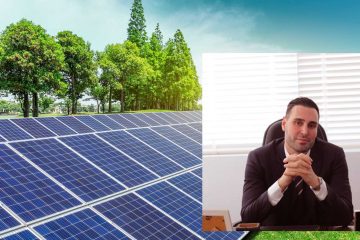Pesticide spraying by aircraft is widely practiced, and many specialized agricultural machines have been produced. Pesticide and fertilizer spraying, in particular, is a simple form of general aviation that involves flying over a fixed area, making programming easier, and the development of unmanned aerial vehicles has been ongoing for a long time. Since the late 1980s, remote-controlled unmanned aerial vehicles such as radio-controlled helicopters began to be introduced into agriculture for purposes such as pest control. Remotely controlled aircraft have become popular since the 1990s, but since 2010 technological innovations have led to the trial introduction of autonomous multicopters into agriculture. It is known that there is a correlation between the wavelength-specific reflection coefficient of agricultural crops and their growth status [1]. Until now, chlorophyll meter (SPAD) was used to understand the growth status of crops. The size of each leaf was measured to check the growth status, but this was very time consuming and only a part of the crop was measured, so agriculture is now equipped with a multi-wavelength camera to collect data on crop growth. was developed [2]. Satellite photographs have been used for similar purposes until now, but it is expected that high-accuracy information can be obtained more easily in the field with the use of fast-returning unmanned aerial vehicles. It is believed that the use of agricultural drones can provide benefits such as reducing the labor shortage in the field and increasing work efficiency. In recent years, agricultural drones have been used in pollination, preventing damage to birds and animals, transporting agricultural products, etc. It is used for various purposes, and new usage methods such as destroying pests are also being implemented. In 2017, Saga University and Optim collaborated to use drones to precisely spray pesticides during edamame cultivation, selling the product under the Smart Edamame brand. [3] In August 2020, Tsukumi City, Oita Prefecture, and the City Certified Farmers Council, composed of farmers and others, conducted a demonstration experiment of spraying pesticides using drones in citrus fields [4] .
Remote control type
It is controlled by remote control, like a radio, and must be constantly monitored by an operator.
Autonomous
It is equipped with navigation equipment such as a global positioning system and flies autonomously.
Wing
Suitable for covering a large area but requires a catapult or runway unless it is a vertical takeoff and landing aircraft. Although it can take off and land vertically and hover in the air, it is slower than fixed-wing aircraft.
Aircraft
seed dispersal
Pest control
Growth status monitoring
Production
Yamaha Motor – has been developing and selling remote radio-controlled helicopters since the 1980s.
On the way
Sibernetek
land drone
japan circuit
DJI – Developed AGRAS MG-1 with pesticide spraying capacity up to 10L
Some manufacturing companies have established a handling license system, and the relevant license must be obtained in order to use the agricultural drones determined by that company.
footnotes
^ Using hyperspectral image data in agriculture
^ Transforming agriculture from the sky. What will the future of agriculture be like with remote sensing and unmanned helicopters?
^ Tadao Gen (26 December 2017). ” Optim is getting into full-scale IT farming, sharing profits with farmers through free drone purchases and crop purchasing “. Nikkei Computer. Accessed July 27, 2022.
^ “Drone pesticide spraying experiment in Tsukumi” Yomiuri Shimbun (August 6, 2020). Accessed 18 August 2020.



